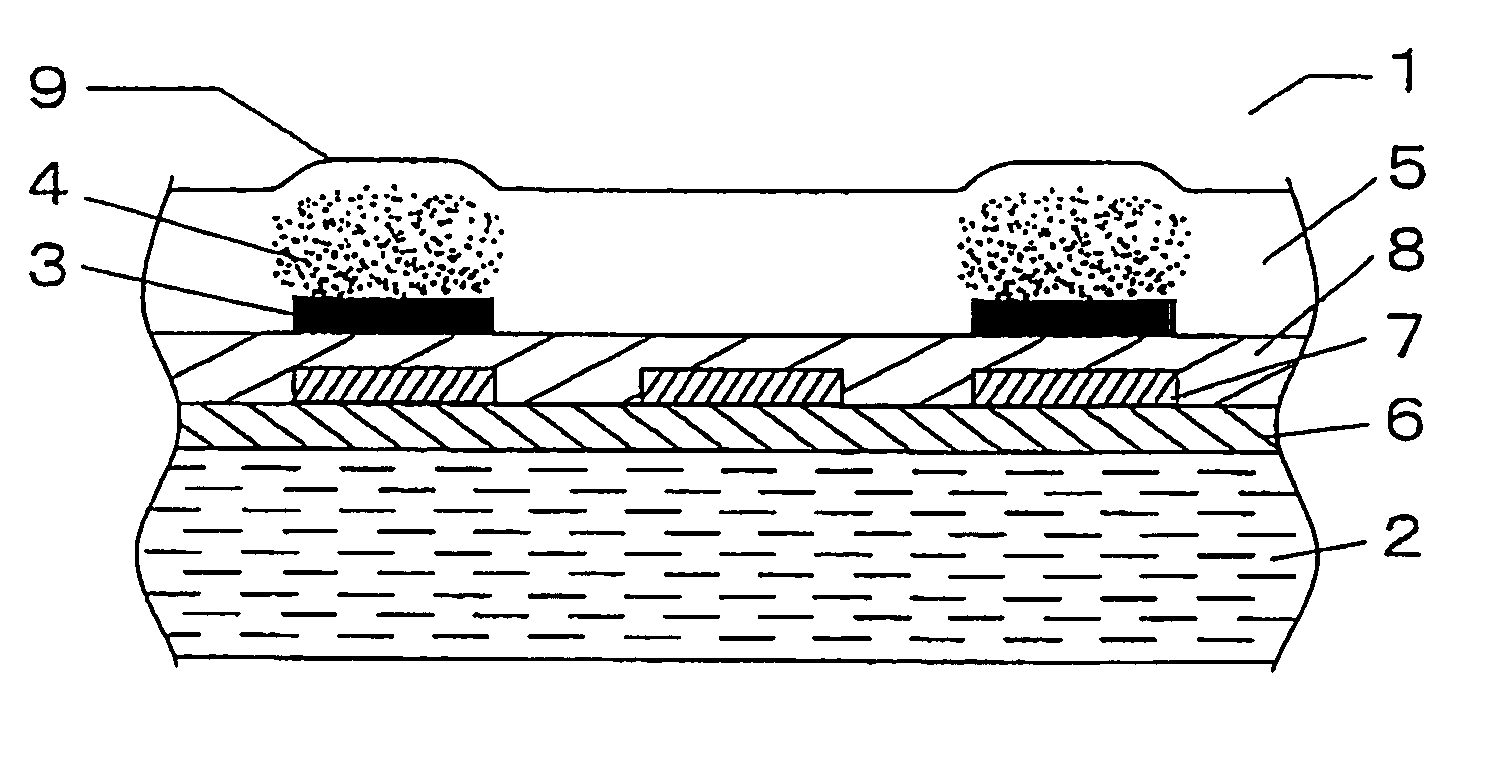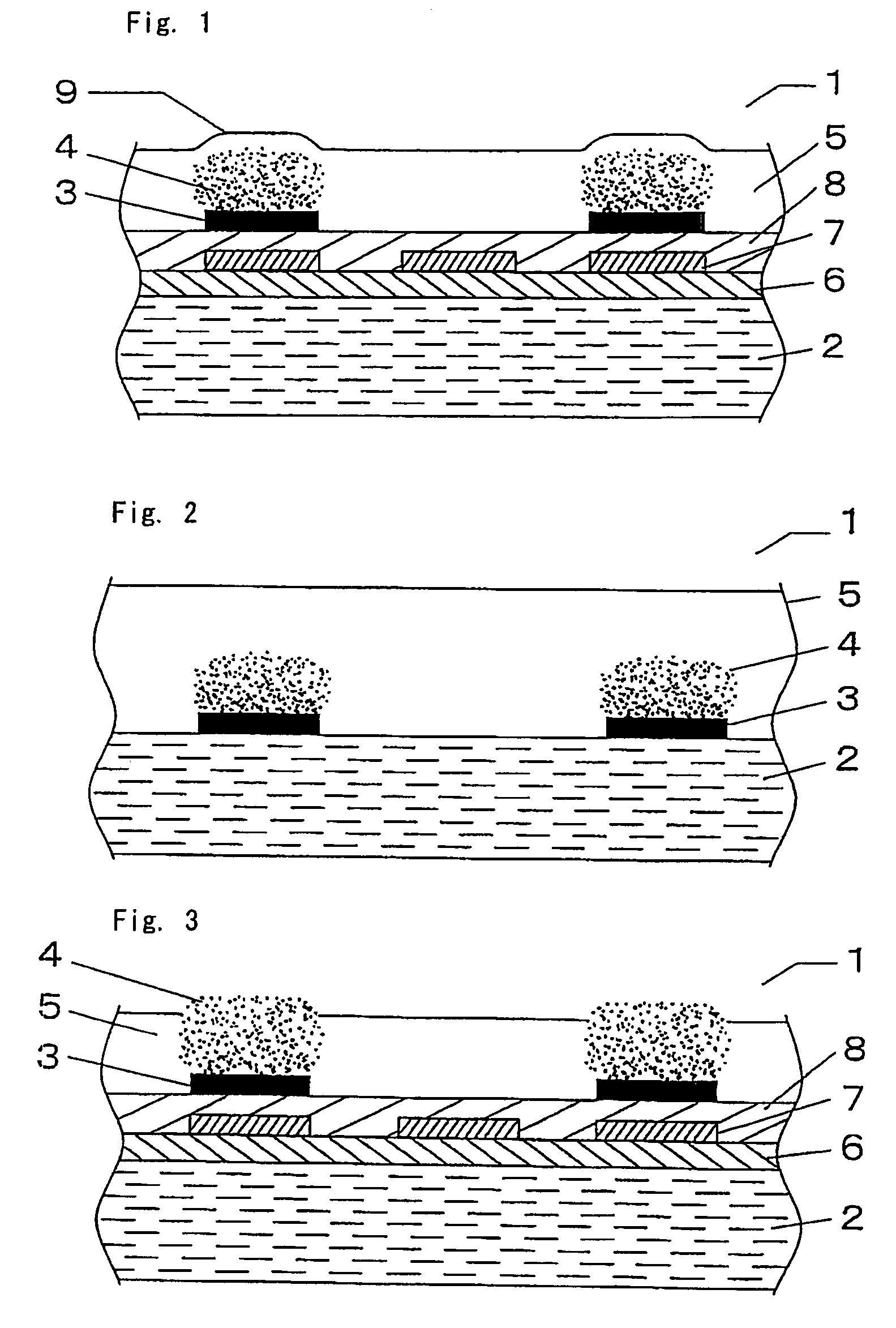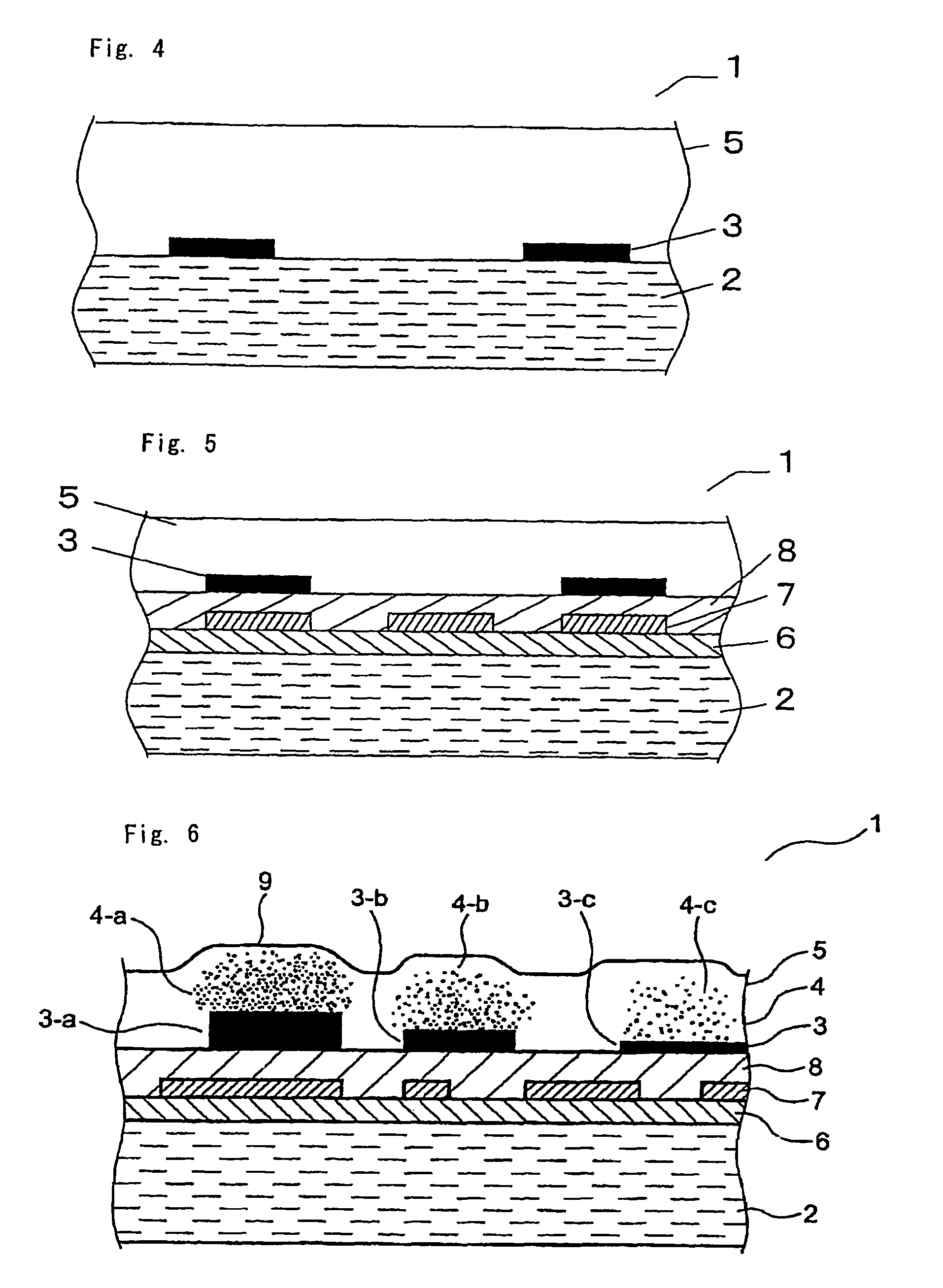Decorating material
a technology of decorative materials and materials, applied in the field of decorative materials, can solve the problems of lack of reality, poor appearance and touch feeling, and inability to achieve a neat convexo-concave pattern, and achieve the effects of good solvent resistance and abrasion resistance, and high interlaminar strength
- Summary
- Abstract
- Description
- Claims
- Application Information
AI Technical Summary
Benefits of technology
Problems solved by technology
Method used
Image
Examples
example 1
[0161]Using an interlaminar-reinforced paper for building materials having a basis weight of 30 g / m2 as the substrate 2, a (whole solid printing) layer having a coating amount of 5 g / m2 was formed on one surface of the substrate with an ink containing a binder composed of an acrylic resin and nitrocellulose and a colorant composed of titanium white, iron oxide red and chrome yellow by a gravure printing method, thereby forming a colored layer 6. A pattern layer 7 with a woodgrain pattern was formed on the colored layer 6 by a gravure printing method using an ink containing a binder composed of nitrocellulose and a colorant composed mainly of iron oxide red.
[0162]Next, a coating composition containing a binder composed of a polyester urethane-based resin having a number-average molecular weight of 20,000 and a glass transition temperature (Tg) of −59.8° C. and a polyisocyanate obtained from tolylene diisocyanate, was applied in a coating amount of 7 g / m2 over a whole surface of the s...
example 2
[0166]The same procedure as in Example 1 was repeated except for using a blackish brown ink containing a binder resin obtained by mixing 90% by mass of a polyester urethane-based resin with 10% by mass of an unsaturated polyester resin, and a colorant composed of carbon black and iron oxide red, as the low-luster pattern ink, thereby obtaining a decorative material.
[0167]The thus obtained decorative material was examined to evaluate gloss, water resistance, releasability with passage of time, stain resistance and marring performance thereof. The results are shown in Table 1.
[0168]The respective decorative materials obtained in Examples 1 and 2 were observed by magnifying a section thereof using a microscope. As a result, it was confirmed that a portion of the surface protective layer located just above the low-luster pattern ink layer and in the vicinity thereof was kept in a low-gloss state exhibiting light scattering, whereas the other surface portion of the surface protective lay...
example 3
[0169]The same procedure as in Example 1 was repeated except that the content of the silica particles having an average particle size of 5 μm in the electron-beam-curable resin composition was changed to 8 parts by mass, thereby obtaining a decorative material.
[0170]The thus obtained decorative material was examined to evaluate gloss, water resistance, releasability with passage of time, stain resistance and marring performance thereof. The results are shown in Table 1.
PUM
| Property | Measurement | Unit |
|---|---|---|
| height | aaaaa | aaaaa |
| thickness | aaaaa | aaaaa |
| thickness | aaaaa | aaaaa |
Abstract
Description
Claims
Application Information
 Login to View More
Login to View More - R&D
- Intellectual Property
- Life Sciences
- Materials
- Tech Scout
- Unparalleled Data Quality
- Higher Quality Content
- 60% Fewer Hallucinations
Browse by: Latest US Patents, China's latest patents, Technical Efficacy Thesaurus, Application Domain, Technology Topic, Popular Technical Reports.
© 2025 PatSnap. All rights reserved.Legal|Privacy policy|Modern Slavery Act Transparency Statement|Sitemap|About US| Contact US: help@patsnap.com



